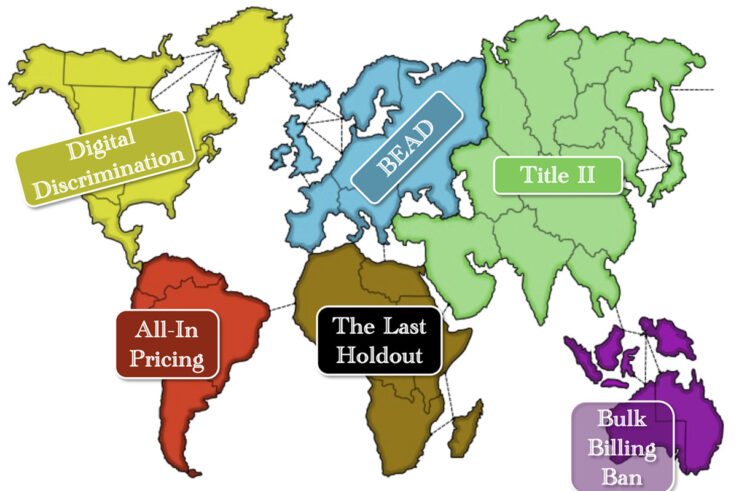We often hear today that there’s an unprecedented “patent litigation explosion” that’s killing innovation. Last week, the New York Times plied this claim without abandon in its hit piece on high-tech patents. It’s become so commonplace that this phrase garners over 1.3 million hits on Google. It’s especially common fare in discussions about the “smart phone war.” It was raised repeatedly by my fellow panelists, for instance, at a congressional briefing a few days ago (you can listen to the audio of the event here).
Of course, a blog posting is not a law review article and so I can’t get into all of the weeds here, but a blog is ideal for a few quick reactions to this tread-worn trope in the public policy debates about patents.
First, it’s simply untrue. Award-winning economist, Zorina Khan, reports in her book, The Democratization of Invention, that patent litigation rates from 1790 to 1860 fluctuated a lot, but averaged 1.65%. Today’s patent litigation rates are around 1.5%. As Yoda would say: patent litigation explosion this is not, hmm, no. In fact, for three decades in Khan’s study patent litigation rates were higher than today’s litigation rate. From 1840-1849, for instance, patent litigation rates were 3.6% — more than twice the patent litigation rate today.
This was during a time, as reported by patent law professor Michael Risch, when patents were handwritten, and even worse, patents were extremely vague, incoherent and sometimes outright unintelligible. And, as Professor Risch and others have so ably reported, patent law was very much unsettled at this time as well given the many new ways that the American patent system departed from English patent law.
And it wasn’t just that the law was new and that patents were vague, as early scientific and technological discoveries were just as difficult to comprehend as the new scientific and technological discoveries are today. Long before Judge Richard Posner was complaining of the lack of technical competence at the PTO or Judge Learned Hand was complaining about his own ignorance of biochemistry in assessing the validity of early pharma patents, Supreme Court Justice Joseph Story was explaining in 1841 that
Patents and copyrights approach nearer than any other class of cases belonging to forensic discussions, to what may be called the metaphysics of law, where the distinctions are, or at least may be very subtle and refined, and sometimes, almost evanescent.
Frankly, with all of the rampant uncertainty in early patent law and in early developments in science and technology — early nineteenth-century scientists, for instance, were still vigorously debating whether the atomic theory of matter was valid — it’s surprising that the patent litigations rates weren’t astronomically higher than just 1.65%, or with many similar problems today that our patent litigations rates are only 1.5%.
The historical patent litigation rates are significant because they also include the same “patent wars” that we are experiencing with the “smart phone war.” The very first patent war began in 1851, and was called at the time in the popular press the “Sewing Machine War.” The Sewing Machine War had all of the allegedly new problems about which there is much breathless commentary on the “smart phone war” today: lawsuits in multiple venues, expensive litigation, numerous overlapping patents, non-practicing (patent-licensing) entities obtaining injunctions against manufacturers, “defensive patenting,” inventors’ sales of patents to firms, etc., etc. There was even widespread popular outcry over the Sewing Machine War, as it was fought as much in the newspapers as it was in the courts. As the classic saying goes: What’s old is new again.
Importantly, the Sewing Machine War was ultimately resolved by patent-owners innovatively creating the very first patent pool in American history, called the Sewing Machine Combination, which functioned successfully until its last patent expired in the 1870s. The Sewing Machine Combination unleashed a tremendous amount of commercial, technological and even social innovation — including new innovative manufacturing techniques, innovative commercial practices, and even helping change social prejudices about women’s ability to use machines. As a result, the sewing machine was fundamental to the success of the Industrial Revolution in the U.S., as I have detailed extensively in my historical research.
But even after the Sewing Machine War was brought to an end in 1856 by the Sewing Machine Combination, so-called “patent wars” continued to occur with every pioneering leap forward in technological innovation — the incandescent light bulb, telephone, electrical systems, automobile, airplane, and radio were all subjects of patent wars. Today’s patent lawyers remember very well the “diaper wars” and the “stent wars” of the 1980s, resulting in hundreds of millions of dollars in patent damages awards. If cutting-edge innovation in disposable diapers (a multi-billion-dollar industry, as any parent knows) is the subject of intense patenting and extensive litigation, then frankly we should be unsurprised that this occurs again with 21st-century cutting-edge innovation in smart phones, tablet computers and other digital devices.
Unfortunately, the complaints today about today’s patent litigation crisis arise more from unchecked intuitions about what feels like a bad situation, from unrealistic assumptions about how much certainty we can achieve in the patent system, and from emotionally-compelling anecdotes about innovators running into trouble with patents — like the ones that dominated the New York Times hit piece on high-tech patents a week ago.
As I said in a previous blog posting, it’s time to bring objectivity and a historical-based perspective to public policy discussions about patent litigation, the smart phone wars, and the role of property rights in innovation.




